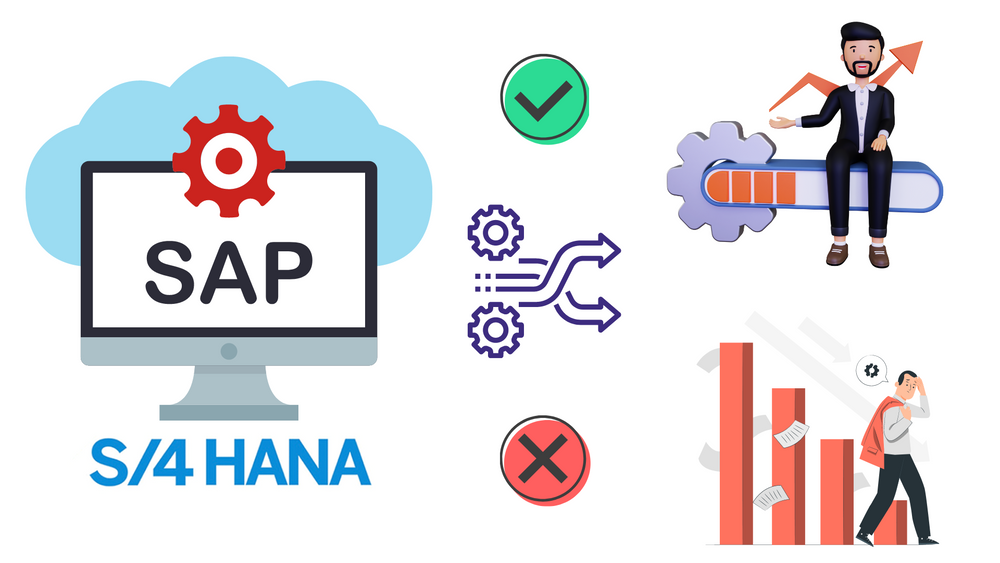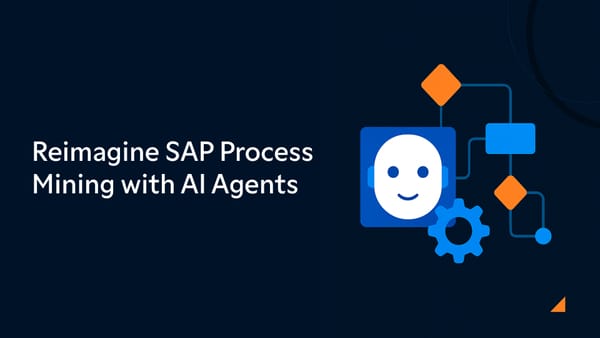Do's and Don'ts during your company’s SAP S/4HANA transformation
Table of contents
- The importance of transformation to SAP S/4HANA
- Do check your hardware possibilities
- Do make sure you have an experienced team in charge of SAP S/4HANA Transformation
- Do clear up doubts about the new SAP S/4HANA Fiori-based user experience
- Do take full advantage of SAP Activate methodology for your S/4HANA project
- Don't forget about custom code removal and consolidation
- Don't forget about the SAP S/4HANA Migration Cockpit
- Don't get caught off guard by using out-of-the box content for data migration
The importance of transformation to SAP S/4HANA

SAP S/4HANA transformation is a major transformation for your company’s SAP solution . It is a transformative solution that can help your company become more agile and competitive. It’s an opportunity to modernize your business processes, improve data quality and performance, and reduce costs.
But transforming your SAP environment isn’t easy. The transformation from SAP ECC to SAP S/4HANA is not a cake walk. There are many challenges and obstacles to overcome during this transformation journey.
And it can be even more challenging when you’re dealing with multiple legacy sap systems. That is why, in this blog we have covered the dos and don'ts that you need to take care of during your transformation.
Do check your hardware possibilities
The first step in any S/4HANA transformation is to check your hardware possibilities. It is important to know if you are able to run S/4HANA in a way that is compatible with your current hardware and software configuration. This can be a daunting task as there are so many variables involved.
For example, what type of hardware will you use for your SAP HANA server? What about the database storage? This should be taken into consideration before you begin planning your transformation.
If you are not sure about this, it is best to look into the best practices to follow before starting the transformation process.
If you do decide to go ahead with the transformation process, also make sure that there is space available for additional hardware and software. This will ensure that your IT department does not have any issues with the upgrade.
Do make sure you have an experienced team in charge of SAP S/4HANA Transformation.
When it comes to SAP S/4HANA Transformation, It is vital that the people responsible for the transformation are well versed with the latest and new technologies, and understand the business context in which SAP is used. This will ensure that they are able to provide feedback on developments and changes, which can be incorporated into future releases.

You will need to make sure that your company has an experienced team in charge of this project. This team will be responsible for creating the roadmap for the business transformation and making sure that all your business requirements are met. They will also ensure that there is a good communication between them and the rest of the organization. In short they should be able to take care of project management, data management and risk management.
You should also make sure that you have a clear vision of what your team wants to achieve with their work during this process. It is important that they know exactly where they want to be in the future, so make sure they know what they can expect from you as a leader and what they need from their colleagues.
Do clear up doubts about the new SAP S/4HANA Fiori-based user experience.
The SAP Fiori-based user experience is the new standard for all SAP S/4HANA implementations. It has replaced the traditional menu-driven interface, and it’s based on a visual hierarchy that makes it easier to navigate, explore and learn.
The SAP S/4HANA Fiori user experience is an important part of the transformation. You can become a better user of SAP S/4HANA if you understand how it works, and if you know what is coming next.
The new Fiori user interface will be fun to use, but it's also important to understand how it works and which features are available. If your company is not yet in the early stages of the change process and does not have access to this interface, then you should strive to get access as soon as possible.
The more information that employees have about their new system, the better they will be able to adapt to it.
Do take full advantage of SAP Activate methodology for your S/4HANA project.
In the new landscape, it is essential to understand that you should be able to create a high-quality solution without the need for extensive resources. The SAP Activate methodology can help you achieve this goal by making sure that your team is ready and capable of delivering a production-quality solution in a short period of time.
It is important to note that this methodology does not replace the traditional approach to business transformation projects for any business case; instead, it will allow you to streamline your project delivery by taking advantage of existing expertise and experience within your company.
Don't forget about custom code removal and consolidation.
Many companies have a mix of legacy systems and S/4HANA in their organization, so it's important to take a holistic view of the transformation process by looking at all of the customizations that are being made to take care of change management.
This means removing any code that isn't needed anymore, and consolidating all customizations into one system or into several smaller sap systems. This can be done with a combination of manual and automated methods. You can start by identifying all the customizations that are being made, then review them one by one to identify which are still needed, which will be removed and which should be consolidated into single source code.
Custom code adaptation using KTern.AI
It's important that you don't just remove the code from one system and then try to add it again somewhere else in your organization. You need to understand why you're removing specific components, how they relate to each other, what problem they solve for your organization and whether there are any alternative solutions available when you look at your current architecture (either through an existing system or another system).
Don't forget about the SAP S/4HANA Migration Cockpit.
If you're planning to migrate your core ERP systems to S/4HANA, it's essential that you plan for a smooth transition. This involves understanding your company's processes, identifying key business drivers and developing an end-to-end migration strategy. It's also important to ensure that your organization is ready for the new releases of SAP HANA and the SAP S/4HANA portfolio.
Custom objects assessment using KTern.AI
The best way to do this is by using a tool like the SAP S/4HANA Migration Cockpit. The migration cockpit is a tool that allows you to model your current ERP system and then simulate how it will look after migrating to SAP S/4HANA. The result is a roadmap with all the steps required in order to move from one version of SAP Business Suite (e.g., ERP or CRM) to another version of SAP Business Suite (e.g., ERP or CRM).
You can use this tool for both small and large migrations, which means you can take advantage of its functionality even if you have limited resources available at hand.
Don't get caught off guard by using out-of-the box content for data migration.
The S/4HANA platform provides an out-of-the-box content for data migration. You can use this content as a starting point for your own customizations. If you want to customize the out-of-the box content, make sure to create a customized version of it.
Don't get caught off guard by using out-of-the box content for data migration. When you use the out-of-the box content, the migration process is handled automatically by SAP HANA Cloud Platform, which means you don't have to worry about manual tasks such as removing unnecessary columns or modifying field values. However, if you want to customize the out-of-the box content, make sure to create a customized version of it. If it's not possible to create a customized version of the out-of-the box content, then use it directly instead of using inbound imports.

If you’ve reached the end of this blog, you are now equipped with knowledge on what to do and what not to do during your company’s S/4HANA Transformation. KTern.AI is a is a Digital Transformation as a Service (DXaaS) product which is built for business transformations that takes care of all the above for you.
Get started with us, reach out to us through Contact Us



